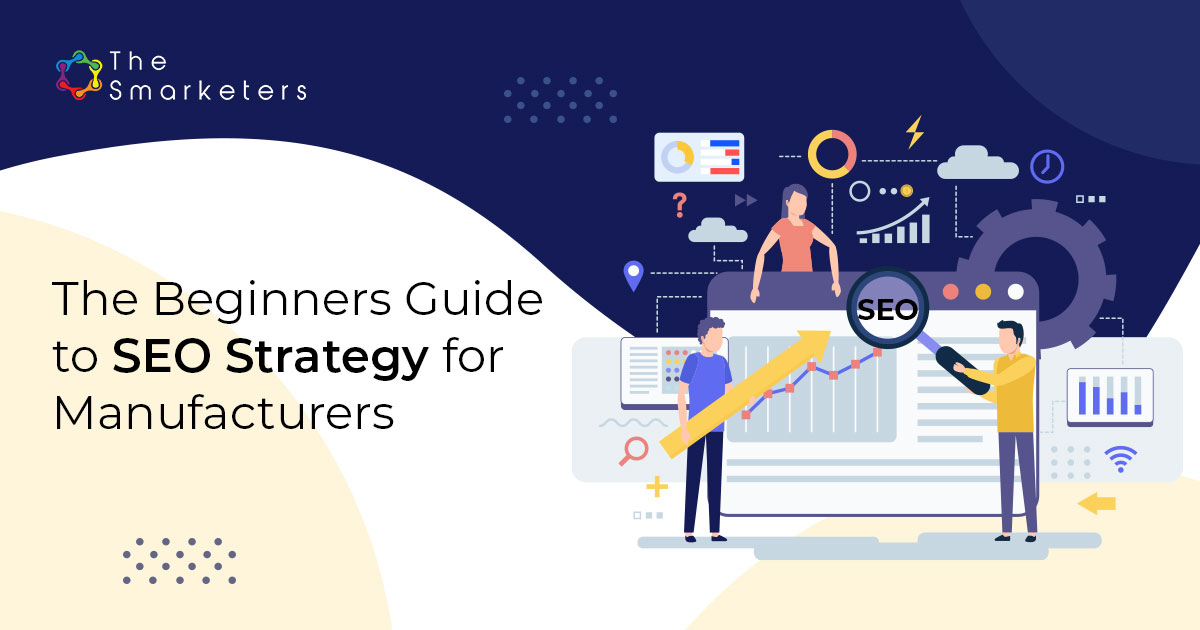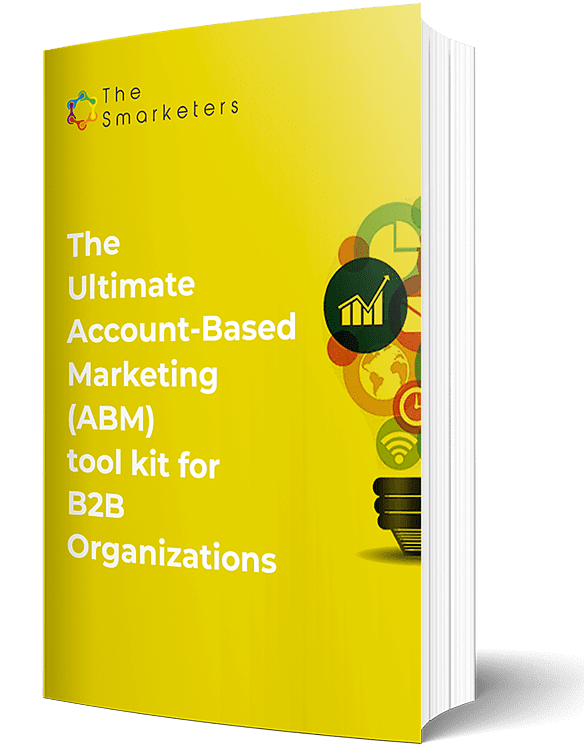Having a strong online presence is crucial for manufacturers in today’s world. Implementing an effective SEO strategy can significantly boost your visibility in search engine results and drive valuable organic traffic to your website.
But what exactly is SEO? And why is it so important for manufacturers? Well, hang tight as we dive into the basics of SEO strategy and uncover how it can revolutionize your manufacturing business. From conducting keyword research to optimizing your on-page content and leveraging local SEO tactics, we’ll cover everything you need to know to get started.
So grab a cup of coffee (or maybe some welding goggles) and let’s embark on this journey together. By the end of this beginner’s guide, you’ll be equipped with all the tools and knowledge necessary to elevate your manufacturing website’s rankings in search engines and attract potential customers like never before. Let’s roll up our sleeves and delve into the world of Manufacturing SEO Strategy!
What is SEO, and why is it important for manufacturers?
In the digital landscape, SEO stands for Search Engine Optimization. It is a strategic approach to improving your website’s visibility in search engine results pages (SERPs). Through various techniques and tactics, SEO helps your manufacturing business rank higher on search engines like Google, Bing, and Yahoo.
So why is SEO important for manufacturers? Well, imagine this scenario: a potential customer is searching online for a specific product or service that your manufacturing company offers. If your website doesn’t appear on the first page of search results, chances are they won’t even know you exist. That’s where SEO comes into play – it ensures that your website appears prominently when users search for relevant keywords related to your industry.
By implementing an effective SEO strategy tailored specifically to the needs of manufacturing businesses, you can increase organic traffic to your site and attract highly targeted leads. This means more opportunities to showcase your products or services to potential customers who are actively searching for them.
Moreover, having a strong online presence through effective SEO can help establish credibility and trust in the minds of potential customers. When people see that you have optimized content with valuable information about their queries or problems within the manufacturing industry, they are more likely to perceive you as an authority in the field.
In addition to driving qualified traffic and building credibility, implementing SEO strategies can also enhance user experience on your website. By optimizing factors such as page load speed, mobile-friendliness, and intuitive navigation structure, you create a seamless browsing experience for visitors, which in turn increases engagement and reduces bounce rates.
Overall, the importance of SEO cannot be overstated when it comes to manufacturers seeking success in today’s digital landscape.
It enables you not only to stand out from competitors but also to reach out directly to those searching for solutions within the manufacturing space.
So, don’t miss out on this powerful tool and let’s dive deeper into understanding how to develop a winning Manufacturing SEO strategy!
Understanding the basics of SEO strategy
Understanding the basics of SEO strategy is crucial for manufacturers looking to improve their online presence and attract more targeted traffic to their websites. SEO, or search engine optimization, involves optimizing your website to rank higher in search engine results pages (SERPs) when users search for relevant keywords.
The first step in developing an effective SEO strategy is conducting keyword research. This involves identifying the specific keywords and phrases that potential customers are using when searching for products or services related to your manufacturing business. By targeting these keywords in your website content, you can increase your chances of appearing prominently in search results.
On-page optimization techniques are another important aspect of SEO strategy. This includes optimizing elements such as title tags, meta descriptions, heading tags, and URL structures on each page of your website. By incorporating relevant keywords into these elements and ensuring they accurately reflect the content on each page, you can improve your chances of ranking higher in SERPs.
Off-page optimization strategies involve building backlinks from other reputable websites to yours. These backlinks act as votes of confidence from other sites, indicating that your site is trustworthy and authoritative. The quality and quantity of backlinks pointing to your site can greatly impact its visibility in search results.
In addition to traditional SEO tactics, manufacturers should also consider utilizing local SEO strategies. Local SEO focuses on optimizing a website’s visibility within a specific geographic area by targeting location-based keywords and directories.
To measure the success of your SEO strategy, it’s essential to track key metrics such as organic traffic growth, keyword rankings, conversion rates, bounce rates, and engagement metrics like time spent on a page or the number of pages visited per session. These measurements will help you gauge the effectiveness of different tactics deployed throughout your campaign.
Avoiding common mistakes is crucial for achieving optimal results with manufacturing-focused SEO efforts. Some common pitfalls include neglecting mobile optimization (as a large percentage of users access websites via mobile devices), ignoring user experience factors like site speed or navigation, and failing to update and optimize website content regularly.
In today’s digital age, having a strong online presence is crucial for manufacturers. And that’s where SEO strategy comes into play. By optimizing your website and content to rank higher in search engine results, you can attract more potential customers and boost your business growth.
Understanding the basics of SEO strategy is key to implementing an effective plan for your manufacturing website. It starts with conducting thorough keyword research to identify the terms and phrases that are relevant to your industry and target audience. This will help you optimize your website content with these keywords, making it easier for search engines like Google to understand what your site is about.
Next, focus on creating high-quality content that provides value to your readers. This could include informative blog posts, product descriptions, case studies, or how-to guides related to manufacturing. By offering valuable information that answers common questions or solves problems faced by your target audience, you not only position yourself as an industry expert but also increase the likelihood of attracting organic traffic from search engines.
Another important aspect of SEO strategy for manufacturers is optimizing on-page elements such as meta tags (title tags and meta descriptions), headings (H1-H6), URLs, and image alt text. These elements provide additional context to search engines about the content on each page of your website.
It’s also essential to ensure that your manufacturing website has a user-friendly design and navigation structure. A well-organized site makes it easier for visitors – potential customers – to find what they’re looking for quickly and easily. Search engines take user experience into account when ranking websites in their results pages, so ensuring a positive browsing experience can improve both visibility and rankings.
Additionally, don’t forget about off-page optimization techniques, such as building quality backlinks from reputable sources within the manufacturing industry or related fields. Backlinks act as votes of confidence from other websites indicating that yours is worth visiting too. The more authoritative sites linking back to yours, the better chance you have at ranking higher in search results.
Conducting keyword research for manufacturing businesses
Conducting keyword research is a crucial step in developing an effective SEO strategy for manufacturing businesses. By understanding the keywords that potential customers are using to search for products or services, manufacturers can optimize their website content to appear higher in search engine results.
To begin the keyword research process, start by brainstorming a list of relevant terms and phrases related to your business. This could include specific product names, industry terminology, or commonly searched phrases. Once you have this initial list, use keyword research tools such as Google Keyword Planner or SEMrush to analyze search volume and competition levels for each keyword.
When analyzing these keywords, consider both the relevance and competitiveness. Relevance refers to how closely the keyword aligns with your manufacturing business offerings, while competitiveness indicates how difficult it will be to rank well for that particular term.
In addition to general keywords related to your industry, also look for long-tail keywords – longer and more specific phrases – that may have lower competition but higher intent from potential customers. These long-tail keywords can help target niche markets within the manufacturing industry.
Once you have identified a list of relevant and high-potential keywords, incorporate them into various elements of your website, including page titles, meta descriptions, headings, and body content. However,
be careful not to overuse keywords, as this can negatively impact user experience.
Remember that conducting ongoing keyword research is important as trends change over time. Regularly monitor changes in search behaviour and update your SEO strategy accordingly. By staying up-to-date with popular search terms in the manufacturing industry, you can ensure that your website remains visible and competitive in organic search results.
On-page optimization techniques for manufacturers
On-page optimization plays a crucial role in improving the visibility and search rankings of manufacturing websites. By implementing effective on-page strategies, manufacturers can optimize their web pages to better align with search engine algorithms and user intent.
One key aspect of on-page optimization is optimizing meta tags. These include the title tag, meta description, and header tags. The title tag should be concise yet descriptive, incorporating relevant keywords. The meta description should provide an enticing summary of the page’s content while also including keywords.
Another important technique is optimizing URL structure. Manufacturers should aim for short, descriptive URLs that incorporate targeted keywords whenever possible. Additionally, it’s essential to optimize the actual content on each page by using relevant headings and subheadings that incorporate target keywords naturally.
Furthermore, image optimization shouldn’t be overlooked. Each image should have a descriptive file name and alt text that includes relevant keywords. Compressing images can also help improve loading times which can positively impact SEO performance.
Internal linking is another effective strategy for on-page optimization. By strategically linking related pages within your website’s content, you not only enhance navigation but also enhance keyword relevance and authority signals for search engines.
Implementing these on-page optimization techniques will help manufacturing businesses improve their website’s visibility in search results and attract more organic traffic from potential customers seeking their products or services.
Off-page optimization strategies for manufacturers
Off-page optimization strategies play a crucial role in boosting the online visibility and authority of manufacturing businesses. By focusing on activities that happen outside of your website, you can further enhance your SEO efforts and drive more organic traffic to your site.
One effective off-page strategy for manufacturers is link building. Building high-quality backlinks from reputable websites helps search engines recognize the credibility and relevance of your website. This can be achieved through tactics such as guest blogging, influencer collaborations, or reaching out to industry publications for opportunities to share valuable content.
Another important off-page strategy is social media marketing. Engaging with your target audience on platforms like Facebook, Twitter, LinkedIn, or Instagram not only helps build brand awareness but also provides an opportunity to generate inbound links by sharing valuable content that others find worth linking to.
Online directories are another avenue manufacturers should explore for off-page optimization. Submitting your business information and website URL to relevant directories can help boost local SEO rankings and make it easier for potential customers within specific geographic areas to find you.
Additionally, participating in industry forums and discussion boards allows you to establish yourself as an expert in the manufacturing field while also generating backlinks through forum signatures or profile mentions.
Leveraging user-generated content (UGC) can be a powerful way to improve off-page optimization. Encourage satisfied customers or clients to leave reviews on third-party review sites or share their positive experiences on social media platforms. These authentic testimonials not only contribute positively towards brand reputation but also increase online visibility through increased mentions and backlinks.
By implementing these off-page optimization strategies effectively, manufacturers can strengthen their SEO efforts and improve their overall online presence in order to attract more targeted traffic and gain a competitive edge in the market.
Utilizing local SEO for manufacturing businesses
Utilizing local SEO can be a game-changer for manufacturing businesses. By targeting customers in specific geographic areas, you can increase your visibility and attract more relevant traffic to your website. Here are some strategies to help you optimize your local SEO:
1. Start with Google My Business: Claiming and optimizing your Google My Business listing is crucial for local SEO. Provide accurate business information such as address, phone number, and operating hours.
2. Optimize your website for local keywords: Conduct keyword research to identify the terms that potential customers in your area are searching for. Incorporate these keywords naturally into your website content, meta tags, and URLs.
3. Create location-specific landing pages: If you have multiple locations or serve different regions, create separate landing pages with unique content tailored to each area.
4. Get listed in online directories: Registering on popular online directories like Yelp, Yellow Pages, and industry-specific directories can improve your local search rankings.
5. Encourage customer reviews: Positive reviews not only boost credibility but also signal to search engines that people trust your business. Encourage satisfied customers to leave reviews on platforms like Google My Business or industry review sites.
6. Don’t forget about social media: Engage with the local community through social media platforms like Facebook or Instagram by sharing updates about events, collaborations with other businesses in the area, or highlighting projects completed locally.
By implementing these strategies effectively, you can enhance your visibility within specific geographical areas and attract more qualified leads from potential customers nearby. Local SEO is an ongoing process requiring regular monitoring and adjustments based on performance data.. Don’t underestimate the power of leveraging localized marketing efforts!
How to measure the success of your SEO strategy
Measuring the success of your SEO strategy is a crucial step in ensuring that your efforts are paying off. Without proper measurement, you may be left wondering if your time and resources are being invested wisely. So, how can you accurately assess the effectiveness of your SEO efforts?
First and foremost, tracking organic traffic to your website is essential. By monitoring the number of visitors coming from search engines, you can gauge whether your optimization techniques are increasing visibility and driving more targeted traffic to your site.
Another key metric to consider is keyword rankings. Are the keywords you have optimized for climbing up the search engine results pages (SERPs)? Keep an eye on these rankings regularly to see if they improve over time.
Conversion rates also provide valuable insights into the effectiveness of your SEO strategy. Are visitors taking desired actions on your website, such as making a purchase or filling out a contact form? By monitoring conversion rates, you can determine if your optimization efforts are attracting qualified leads and generating tangible results.
In addition to these metrics, it’s important to analyze user engagement on-site. Look at metrics like bounce rate and average session duration to understand how well users are interacting with your content once they land on your website.
Don’t forget about backlinks! Building high-quality backlinks from relevant websites not only improves search engine rankings but also increases brand recognition and credibility within the manufacturing industry.
By consistently analyzing these key performance indicators (KPIs), you can gain valuable insights into how well your SEO strategy is performing and make necessary adjustments for continued success in improving organic visibility for manufacturers like yours!
Common mistakes to avoid in SEO for manufacturers
When it comes to implementing an effective SEO strategy for your manufacturing business, there are several common mistakes that you should strive to avoid. These mistakes can hinder your website’s visibility and ultimately prevent potential customers from finding you online.
One of the most common mistakes is neglecting keyword research. Many manufacturers fail to conduct thorough keyword research, which is essential for understanding what terms potential customers are using when searching for products or services like yours. Without this insight, you may miss out on valuable opportunities to optimize your website and attract relevant traffic.
Another mistake is overlooking on-page optimization techniques. This includes optimizing meta tags, headings, URLs, and content with relevant keywords. Neglecting these elements can have a negative impact on your search engine rankings and make it difficult for search engines to understand the relevance of your web pages.
Additionally, some manufacturers underestimate the importance of off-page optimization strategies such as link building. Building high-quality backlinks from authoritative websites within the industry can significantly improve your website’s authority and reputation in the eyes of search engines.
Another critical mistake is disregarding local SEO tactics. As a manufacturer targeting specific geographical areas or industries, it’s important to optimize your website locally by including location-specific keywords in your content and ensuring consistent NAP (Name, Address, Phone Number) information across all online platforms.
Failing to measure the success of your SEO strategy is yet another common pitfall among manufacturers. Monitoring key metrics such as organic traffic, bounce rate, conversion rates,and keyword rankings will help you identify areas that need improvement and allow you to make data-driven decisions moving forward.
Last but not least importantly, neglecting future trends in SEO can also be detrimental. Manufacturers must stay updated with emerging trends like voice search optimization,mobile-friendliness, user experience, and AI tools. These factors play a crucial role in staying ahead of competitors while maximizing online visibility. As technology evolves, it is essential for manufacturers to adapt their SEO strategies accordingly.
Overall, it is important to prioritize thorough keyword research, on-page and off-page optimization tactics, local SEO, measurement and monitoring, and staying updated with emerging trends in order to improve your website’s visibility and attract relevant traffic effectively. Avoiding these common mistakes will help you stay ahead of the competition and ensure long-term success in your SEO efforts.
Future trends in SEO for the manufacturing industry
1. Voice search optimization: As voice assistants like Siri and Alexa become increasingly popular, optimizing manufacturing websites for voice search is a must. Manufacturers should focus on creating conversational content that matches the way people speak when using voice commands.
2. Mobile-first indexing: With the majority of internet users accessing websites through their mobile devices, Google has shifted its focus to mobile-first indexing. This means that manufacturers need to ensure their websites are responsive and provide seamless user experience across all screen sizes.
3. Video content optimization: Videos have gained significant popularity as a marketing tool, and this trend will continue in the future. Manufacturers can optimize their video content by including relevant keywords in titles, descriptions, and tags to improve visibility on search engine results pages.
4. Artificial intelligence integration: AI technology is revolutionizing various industries, including SEO. In the manufacturing industry, AI tools can help analyze large amounts of data quickly and efficiently, providing valuable insights for optimizing website performance.
5. User experience enhancement: Search engines are placing increasing importance on user experience factors such as page load speed and ease of navigation. Manufacturers should prioritize improving these aspects of their websites to enhance user satisfaction and boost search rankings.
6. Schema markup implementation: By implementing structured data markup or schema markup on their websites, manufacturers can provide more information about their products or services to search engines’ crawlers. This can lead to enhanced visibility in rich snippet results.
The future of SEO for manufacturing businesses lies in embracing emerging technologies like voice search optimization and AI integration and focusing on enhancing user experience through responsive design and fast loading times.
Leveraging AI tools for SEO optimization
Artificial Intelligence (AI) has revolutionized various industries, and the field of SEO is no exception. When it comes to optimizing your manufacturing website for search engines, utilizing AI tools can provide significant advantages.
One way AI tools can enhance your SEO strategy is through advanced data analysis. These tools can crunch vast amounts of data in seconds, providing valuable insights into keyword performance, user behaviour, and competitor analysis. By leveraging this information, you can better understand what keywords to target and how to optimize your content effectively.
AI-powered algorithms also enable automated content creation. Using natural language processing capabilities, these tools generate high-quality content that aligns with search engine guidelines while maintaining readability for human visitors. This not only saves time but also ensures that your website consistently produces fresh and engaging content.
Moreover, AI tools offer intelligent recommendations for on-page optimization. They analyze factors like page load speed, mobile-friendliness, meta tags, and internal linking structure to identify areas for improvement. With these insights at hand, you can make informed decisions about optimizing your website’s technical aspects.
Additionally, AI-powered chatbots are another valuable tool in improving user experience on your manufacturing website. They engage with visitors in real time by answering their queries promptly. This not only enhances customer satisfaction but also increases dwell time on your site – a key metric that search engines consider when ranking websites.
Furthermore, AI tools assist in monitoring backlinks by identifying new opportunities as well as toxic links that could harm your search rankings. By regularly analyzing backlinks using AI-driven software, you can ensure a healthy link profile that boosts organic visibility.
Conclusion
In this beginner’s guide to SEO strategy for manufacturers, we have covered the importance of SEO for manufacturing businesses and explored various techniques to optimize your website. By implementing these strategies, you can improve your online visibility, generate more organic traffic, and ultimately increase sales.
Remember that SEO is an ongoing process and requires consistent effort to see results. Keep monitoring your keyword rankings and regularly update your content to stay ahead of the competition.
Additionally, don’t overlook the power of local SEO for manufacturing businesses. Optimizing your website for local searches can help you attract customers in your specific geographic area and drive foot traffic to your physical location.
As technology continues to evolve, it’s important for manufacturers to stay updated with future trends in SEO. Artificial intelligence tools are increasingly being used in optimization efforts. Leveraging AI tools can provide valuable insights into user behaviour, competitor analysis, and content optimization.
To achieve success with your SEO strategy as a manufacturer, avoid common mistakes such as keyword stuffing or neglecting mobile optimization. Focus on delivering high-quality content that provides value to users while also satisfying search engine algorithms.
By following these guidelines and staying proactive in adapting new tactics, you’ll be well-equipped to navigate the ever-changing landscape of SEO for manufacturing businesses.
So go ahead – implement these strategies today! Boost your online presence, reach wider audiences, and establish yourself as a trusted authority in the industry through effective SEO practices tailored specifically for manufacturers.












